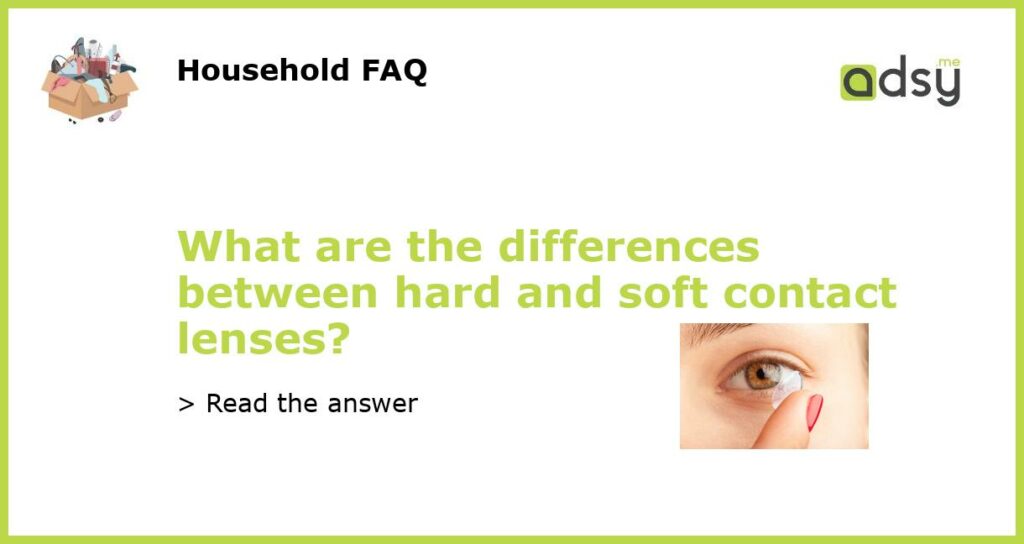Hard vs Soft Contact Lenses: Understanding the Differences
Contact lenses are a popular alternative to glasses for people who want to improve their vision without the hassle of frames. However, there are two main types of contact lenses that can make choosing the right one a daunting task – hard and soft. In this article, we explore the differences between hard and soft contact lenses to help you make an informed decision.
The Material
The primary difference between hard and soft contact lenses lies in the material used to make them. Hard contacts are made from rigid, gas-permeable material that allows oxygen to flow through the lens to the cornea. In contrast, soft contacts are made from flexible plastic combined with water, which makes them more comfortable to wear.
Because hard lenses are non-flexible, they maintain their shape on the eye, providing clearer vision. They are also more durable, easier to care for, and longer-lasting than soft lenses. However, soft lenses are more comfortable to wear and are suitable for people with sensitive eyes or those who need to wear lenses for extended periods.
The Cost
The cost of hard and soft contact lenses can vary significantly, depending on the type of lenses and the number of lenses needed. In general, hard lenses are more expensive than soft lenses because they last longer and require less replacement. However, the price of soft lenses can add up if you need to replace them frequently due to wear and tear.
It’s worth noting that insurance plans may cover some or all of the cost of contact lenses. Therefore, before making a decision, it’s essential to check with your insurance provider what coverage you have.
The Fitting Process
The fitting process for hard and soft contact lenses is also different. Hard lenses are custom-made to fit the shape and size of the patient’s cornea, so the fitting process can take longer and involve multiple visits to the eye doctor. In contrast, the fitting process for soft lenses is relatively quick and straightforward, and often a patient can leave the office with new lenses on the same day.
The Suitability
The suitability of hard and soft contact lenses depends on several factors, including the person’s lifestyle, the condition of their eyes and the severity of their vision impairment. Hard lenses are often recommended for people with astigmatism, corneal distortion, or high prescriptions. They are also suitable for people who are prone to allergies or have difficulty with handling lenses.
Soft lenses, on the other hand, are generally recommended for people with mild to moderate vision problems or those who need lenses for extended periods. They are also suitable for people who live an active lifestyle or participate in sports since they are less likely to dislodge or fall out of the eye during physical activity.
Both hard and soft contact lenses have their pros and cons, and the right choice depends on your individual needs and preference. It’s essential to consult with your optometrist to determine which type of lenses is best for you based on your eyes’ health, prescription, and lifestyle.






